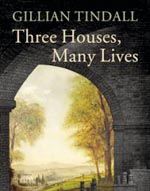Book Review: Three houses, Many Lives
Jeremy Musson reviews a book which looks at history through the stories of three different houses


This is a gentle, yet rigorous examination of the story of three different historic buildings, which have all survived into the 21st century in different ways-two of them rather against the odds. Each chapter is an engaging meditation on English history seen through the individual stories of these hardly connected places.
The connection comes only with the author herself. She was at the boarding school that was run at The Manor House at Limpsfield, Surrey, whose age and story had always intrigued her (she recalls her first reaction: ‘Looks like a hospital... Or a prison'). She stumbled on the remnant of Stapleton Hall, 16th century in origin, when exploring 1950s Hornsey (‘cracked stucco, blackened yellow brick, broken or missing front walls').
And, finally, it was her cousins, the Milners, who owned the Old Vicarage at Taynton, Burford, Oxfordshire, for 39 years (‘Both my cousin and his wife were the children of vicars. It came naturally to them to inhabit a spacious if draughty and old-fashioned house').
These are the places Gillian Tindall has chosen to explore for her book, and the many lives of the title are the numerous owners and long- and short-term occupiers whose tales she picks out and brings into the light for a moment. She does it with such deft skill that I think of a person lighting matches in the dark, creating unexpected bursts of flame and illuminating a whole room.
To anyone interested in old buildings, the process of discovering the history of any one place is challenging, enjoyable and frustrating all at once. You can find out so much and some things must be guessed at. But it takes a certain curiosity and grit to go as deep as Miss Tindall does into the strange juxtapositions of the inter-connected human lives that belong to such places.
As these begin to unfold, the narratives of her houses become as gripping as any novel. At her old school in Limpsfield, for instance, rather disappointing teachers are contrasted with an old girl (of whom she had never heard when a pupil) Diana Rowden, an unbelievably courageous SOE operative during the Second World War who was captured and executed.
Most altered and changed in use is London's Stapleton Hall. It remained a working farm for most of the 19th century before the advance of the railway helped transform the once-rural parish into densely urban terraced streets. When Stapleton Hall ceased to be a home, it was the local Con-servative Club and, later still, a lorry drivers' drinking club.
Exquisite houses, the beauty of Nature, and how to get the most from your life, straight to your inbox.
Today, both The Manor House at Limpsfield and Stapleton Hall have been divided into flats; only the Old Vicarage remains a single dwelling. Thanks to Miss Tindall, the stories of all three are now better understood than at any other point in their history, and all have their place in a perfectly crafted book.
Country Life is unlike any other magazine: the only glossy weekly on the newsstand and the only magazine that has been guest-edited by His Majesty The King not once, but twice. It is a celebration of modern rural life and all its diverse joys and pleasures — that was first published in Queen Victoria's Diamond Jubilee year. Our eclectic mixture of witty and informative content — from the most up-to-date property news and commentary and a coveted glimpse inside some of the UK's best houses and gardens, to gardening, the arts and interior design, written by experts in their field — still cannot be found in print or online, anywhere else.
